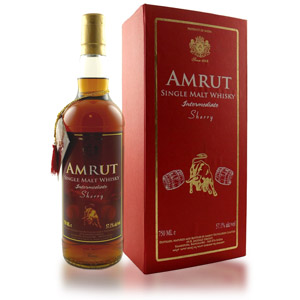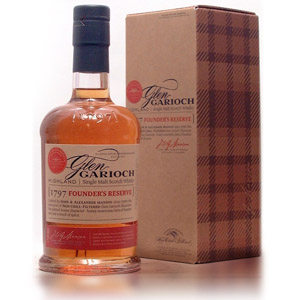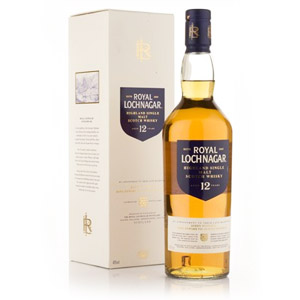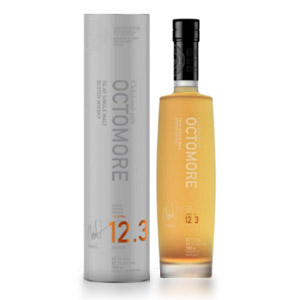Amrut Portonova, like the wildly popular Fusion, is another homerun for Indian whisky producer Amrut. Like the Intermediate Sherry release, Portonova is constructed using an involved process that Whisky Advocate editor John Hansell describes as a “port-pipe sandwich”: The single-malt spends approximately 3 years in a combination of new and ex-bourbon barrels, in the hot and humid Indian climate, followed by a dunk for several months in imported Portugese port pipes. After picking up some port character (again, this is a tropical climate so the process is accelerated), the whisky is transferred back into ex-bourbon barrels to marry before bottling at cask-strength. I’d personally be very curious to try two whiskies matured in this way: one with and the other without the final boubon maturation, to see if it has any real effect. At any rate, the whole process takes somewhere between 3 and 4 years, and the malt retails for almost $125.
What?!
Yes, $125 for a 4 year-old malt whisky. I’d like to take this opportunity to talk a little bit about price again. It’s becoming more and more evident that the whisky industry’s pricing during boom times is based less on maintenance of profit-margins, and more on flights of whimsy. You can argue all you want that port pipes are expensive to import, that whisky evaporates faster in a hot climate, that specialty bottlings are expensive to produce, or that smaller/boutique producers don’t have the production capacity or efficiency to pump out cheap whisky by the truckload. If Amrut can make a 3 year-old single malt and sell it for $50 (which no doubt contains the same wild profit margin), they should be able to produce a four year-old cask-strength port-sandwich version, with 33% higher ABV, for $75 at the most.
The conclusion is simple: whisky producers (especially those with “hot” products in a burgeoning market) can charge whatever they think they can get for their whisky, and the only defense those of us with budgets have is to carefully pick our malt purchases to maximize the price-vs-quality ratio of our collections. See my article about price-vs-quality for some strategies.
All that said, Portonova is an exquisite product which (in a blind tasting) could easily be confused with a $125+ 21 year-old wine-finished scotch. Last I saw, it had sold out everywhere but if you have the budget, a love of port/wine finishes, and see some on a shelf somewhere, just know that I thought it was fantastic.
Only 150 cases were produced. I got the opportunity to taste Portonova, which was labelled only as ‘Amrut Mystery’ in the #amrut5 twitter tasting late last year. Thanks to Colin for organizing the Amrut Twitter Tasting, and sending me the samples!
Color: Deep dark mahogany. Richly colored.
Nose: Piercing nose – a sour top note like key limes over a layer of round, plummy sweetness. Lots of port character – ruby berries, plump black raisins, resiny brandy. Underneath there is a hint of banana sorbet, but distinctly different from other Amruts.
Palate: There’s the Amrut banana upfront. Sweet and just off cloying. There is moderate tongue burn, followed by sweet-and-sour mix, cinnamon raisin toast, sticky prunes, banana nut bread and raspberry jam. Viscous mouthfeel: syrupy but not oily or thick.
Finish: Subtle, but long. Leaves behind a sherry-like cherry syrup, drying oak, and some vague savoriness/meatiness. A bit muddled.
Overall: The nose is something unique. That sour high note combined with a sea of dark fruits and rich layers of port make an uncanny but delicious combination. I’m not sure where the sour lime note comes from – it’s not something I associate with port – but it carries through on the tongue. The finish is a little bit vague, with most of the exciting flavors dried up and only the wood and some remnant plummy notes left. But the nose… I could sit and smell this all day.
With Water: The sour note I mentioned is amplified by the addition of water. It reveals notes of green banana, sweet pea, and toffee in the nose. On the tongue, the whisky becomes sweeter and the burn is very much diminished. The finish, also, is somewhat clarified, with more green fruits and some golden raisin. I definitely suggest trying this with a very small amount of water.










Hi Mark,
Thanks for your review and critics on the pricing. When the whole world is running on
high inflations, consumers always expect WHISKY producers go downward on the pricing?
At the end of the day it is consumer’s choice and here you’re too decide what is the right price to pay. I want to highlight few things here for your understanding.
Although age factor is irrelevant on our bottling, the average age of Portonova is about 6 years. Average maturation loss for maturing 6 years
is about 12% year on year. We work in a very different environment here. We pay almost 30% import duty on every single barrel we purchase that includes bourbon. Again this WHISKY is a full cask strength WHISKY. Me, the man at the front of the market knows that we are not ripping the consumers of.
Age statement is something being associated with price and quality for a long time now.
It will change for sure and not long to go.
Kind Regards,
Ashok Chokalingam
Amrut Distillereis
Hi Ashok, Thanks for taking the time to comment on my post! It’s always nice to hear from the whisky producers. Let me just respond with a few points: Great to hear that Portonova is 6 years old – I wish this kind of information were always made readily available by whisky producers – I think the best way to educate consumers about why age “doesn’t matter” (or has less impact than people think) is to SHOW them the facts about the whisky they like, rather than hiding the age statements as if the company is ashamed of them. (This goes for 75% of Scotland, as well, and all of Bourbon country). Age is just another factor in quality, along with barrel type, mashbill (for non-malts), yeast used, barley strain, distillation method, and so much more. Tell people this stuff, they’ll connect more with your whisky, and understand it better.
As for the pricing – I understand that import duties are higher in India, and (as I mentioned in the post) that you lose a large quantity of whisky to evaporation. My comparison was more about the difference between the standard Amrut expression at $50 US, versus the Portonova (3 years older, and cask strength, plus port pipes) at $125. I just don’t see enough differential in the COST of making that whisky to justify the differential in PRICE. Don’t get me wrong, I’m not saying you should sell it at zero profit. I’m just saying that your ‘average’ whisky consumer these days wants to drink a $50 whisky that he/she enjoys and feels is a good value (good quality for the price). I, like many of my readers, balk at a $125 expression, especially if it’s hard to believe that it could cost that much to produce. I’m sure it will all sell, though, since there are plenty of consumers with money to burn in the luxury spirits business. My job as a whisky blogger is to tell my fellow budget-minded whisky drinkers which malts are worth their money.
Ashok,
I just spoke on Twitter with a few fellow bloggers from the Netherlands, and they informed me that they pay €26 for the basic Amrut single-malt, and €55 for Portonova. Those sound like totally reasonable prices to me! How come those of us in the ‘States are paying $50 (equivalent €38) for basic Amrut, and $125 (equivalent €95) for Portonova?! Clearly some middle-man, marketing firm, or importer along the way is jacking up your Amrut prices. Do my arguments about your pricing make more sense in those terms? Amrut isn’t cheating consumers, but someone along the way is making a hefty profit off of the US market. I’d *gladly* pay €55 for Portonova, and call it a good deal.
Aweseom review, Nathan. I hadn’t heard about the Portonova at all (I haven’t even cracked open my bottle of Fusion yet) – but your description is so vivid I feel like I’ve tasted it. It sounds amazing and now I am filled with desire.
Thanks, too, for laying down a clear position on value.
However, a story I heard makes me think a factor in the high cost might have something to do with shipping. Ruben, on the Belgian whiskey blog “Whisky Notes” said the following about the Amrut Intermediate Sherry:
“This Amrut Intermediate Sherry, launched in 2010, had a complex maturation: first in ex-bourbon and new oak casks, then in sherry and finally in bourbon again. The spirit was shipped to Spain (and filled casks back to India) in order to avoid infection problems with shipping empty sherry casks (and the even more problematic desinfectation with sulphur sticks).”
http://www.whiskynotes.be/2012/world/amrut-intermediate-sherry/
Perhaps this “infestation” issue is the reason why Amrut performs these 3 part “sandwich” barrel aging arrangements. If so, then Portonova would have been shipped to Portugal for fill in port casks and then shipped back. I couldn’t find anything about this – even on the Amrut official press release:
http://amrutspiritofindia.files.wordpress.com/2011/12/amrut-portonova-press-release.pdf
Perhaps Amrut didn’t do this multiple transoceanic shipping round robin with the Portonova at all – or perhaps they did but didn’t opt to tell anyone about it. Just speculating…
If oceanic voyages back and forth between India and southern Europe is part of the production of these limited edition really good Amruts, might this support the marketing hype of Kelt Cognac – which sends its Cognacs on a 3 month sea voyage “around the world” for the purposes of enhanced aging. Kelt says, of oceanic aging of cognac, on their web site:
“The constant movement of the sea washes the cognac around inside the barrels 24 hours a day, 7 days a week. Every molecule of the cognac is in contact with wood hundreds of times a day. This can be compared to once in three years when the cognac lies in the cellar or “Chai”.”
“The constant movement helps bring out subtleties in the wood as well as the desired Limousin characteristics that normally would take approximately 10 years to extract, thereby increasing the age profile of the cognac by approximately a decade in 90 days.”
http://www.keltcognac.com/default.aspx?FolderID=3c7cc3b3-59d9-4f67-8928-5be04b77d4a8
I haven’t tried Kelt Cognac, and I haven’t tried Amrut Portonova or Intermediate Sherry – but maybe there’s something to this oceanic aging angle after all… or not…
I liked the Fusion, but the price for this one will keep me away.
Great discussion,
As the US importer of Amrut let me add a few comments. The cost to ship certainly plays a role in the overall costs. The biggest factor is the 3 tier system in the US, which requires that there be an importer, a distributor and a retailer – all of which need to make a fair return. Add to this the various state taxes, the cost of any decent whisky is going to go up. At least Amrut spends its well earned dollars in making innovative whiskies and not on glossy adverts or other PR.
We also import whisky from Australia, Canada and Scotland. Production costs continue to rise and in todays global markets raw material costs are consistent no matter where you are manufacturing.
Raj,
Thanks very much for joining the discussion! I guess I don’t see why the US factors of importation would have a *larger* impact on the price of Amrut than it has on malts from Scotland or whiskies from Ireland. Springbank 10 year, for example, is around $55 in the US (at least in California). In the Netherlands, it’s around 37 euros – approximately $50 US. Amrut Portonova, however, is 55 euros (approximately $72 US) in the Netherlands, and almost $125 here! If US import laws and the three-tier system were acting across the board on all liquor imports, we’d be suffering under prices like $95 for Springbank 10! In my time as a whisky enthusiast and blogger, I’ve seen lots of varied prices across the globe on malts, and I understand that many factors contribute to the final register price on luxury products… That said… I’m sorry, Amrut Portonova is good, but it’s not $125 good. It IS $72 good. Maybe I should consider a trip to the Netherlands? 😉
Now that we have Ashok from Amrut and Raj, Amrut’s importer on the thread, can either of you verify Ruben’s report that Intermediate Sherry spirit is shipped to Spain to be filled in sherry casks and then shipped back to India? Does Portonova spirit get shipped to Portugal to be filled in port casks and then shipped back to India, or are the port casks shipped to India empty and filled there?
OK, This is getting dragged.
On the pricing the lowest that I could see in the USA is $99 in Binny’s. That is about £65.00 in equivalent terms and average price n Britain is around £61 to £65. It depends on retailers anyway. I think this is suffice to say. The pricing policy from our distillery is Universal pricing. By the time it reaches consumer it can vary to a greater extent depending on the structure of retailing in a particular country.
On Maturation questions, we have shipped our casks strength whisky to Spain and asked them to put couple of cases in each cask and ship it back to India. It is not that whole cask is filled with spirit in Spain.
On Portonova we did not do that way. But managed get the casks intact somehow. But the maturation process is similar to Intermediate Sherry. The reason why did this way was that the dominance of Port and Sherry was too much when you try to finish the whisky. As a result we opted for sandwich maturation which worked well.
Thanks
Ashok
Thanks for the info, Ashok – I had always wondered why the ‘Intermediate’ step was taken – I think it’s a very cool innovation, and I’m glad to hear that it actually has a purpose that affects (positively!) the flavor of the whisky. I should mention that I thought the Intermediate Sherry release was excellent.
I guess re: pricing we’ll just have to agree that the price when it leaves your warehouse is an appropriate value for the cost of making the malt. Somewhere between you and our local retailers on the west coast of the US, the price has increased past the point of acceptability. I regularly pay between $40 and $80 for my single malts from Scotland, and get some incredible value – $45 for GlenDronach 12 is a great value, as is $33 for Laphroaig 10, $36 for Balvenie DoubleWood, and $45 ish for Redbreast 12. A pity that great releases like Portonova can’t achieve a $70-$80 price point here, like they appear to be able to in the Netherlands. Thanks again for joining the discussion, Ashok, I know you’re busy! 🙂
[…] of six years (according to the international face of Amrut, Ashok Chokalingam, as mentioned on Scotchnoob), the Portonova is again smashing preconceptions in the ‘older is better’ debate. […]
[…] of six years (according to the international face of Amrut, Ashok Chokalingam, as mentioned on Scotchnoob), the Portonova is again smashing preconceptions in the ‘older is better’ debate. […]
I think the most important thing to know here is that no one gets screwed more than in Canada. Uigeadail is 160$!!
Oh lordy
Ok I am late to this thread however my 2 cents…..I will be happy to pick up Portonova or Intermediate Sherry or Two Continents in India for the local equivalent price of production+whatever profit the distillers would like to make, except alas it is simply not available in those markets 🙁
My local retailer here in minnesota does offer it up for $99 which i should be considering a bargain according to Ashok :-O !!